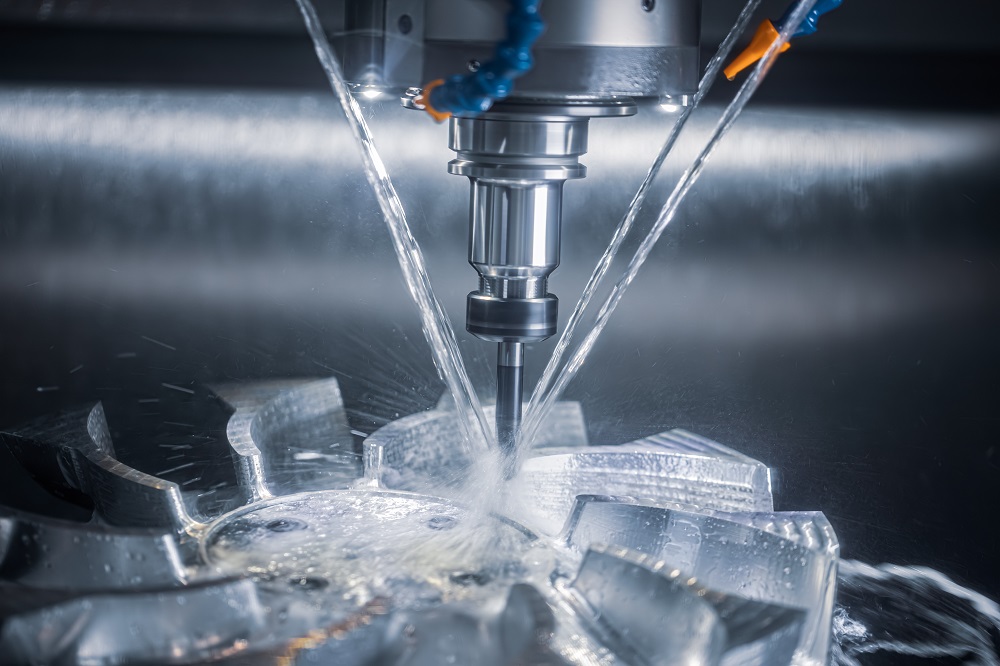In 2020, the global metalworking fluids market reached a value of $9.46 billion — the largest in history. Much of this growth was driven by technological advancements in nearly every fluid category over the past decade, as increasingly specialized formulas have helped manufacturers improve productivity, extend tool life, and even lower carbon emissions.
Looking at the past 10 years, here are the five biggest advancements, from multi-purpose formulas to neo-synthetic fluids.
Breakthroughs in Recycling, Coolant Life, and MQL
Fluid waste has long been an issue in the metalworking industry — one that Master Fluid Solutions has pledged to overcome. In 1971, the company released the first XYBEX® fluid recycling system, designed to clean and purify cutting fluids and extend sump life. It didn’t take long for this cutting-edge equipment to become industry standard. Not only are fluids lasting longer, but recycling equipment and techniques have also improved to help eliminate coolant waste.
From there, manufacturers turned their focus to minimizing fluid waste by reducing the amount needed for operations. This spurred the invention of minimum quantity lubrication (MQL). In the early 2010s, products like TRIM® MQL™ 1000 were formulated to adapt to an even wider array of application types, including misting and manual. MQL 1000 is even manufactured with renewable ingredients for eco-conscious companies.
Multi-Purpose Formulas
Traditionally, lubrication and corrosion protection required multiple application steps and products. However, advanced forming fluids, like those in the WEDOLiT line, have enhanced their formulas to provide multiple benefits in a single solution. For instance, WEDOLiT corrosion inhibitors provide long-term rust prevention as well as enough lubrication to accommodate complex bends in forming and stamping operations.
Multi-purpose formulations have greatly improved manufacturing productivity, as they can drastically cut numerous steps from any given operation and save time by eliminating excessive fluid applications. Plus, consolidating multiple functions into a single product has led to a reduction in material costs.
Advanced Thixotropy
Thixotropic fluids have led to major breakthroughs in forming manufacturing output. Their high-viscosity compositions allow them to hold in place where they’re applied, even in the face of agitation and temperature fluctuations. The uniformity of the fluid coat also prevents it from pooling in pores within the surfaces of rough workpieces, resulting in uneven protection. This makes thixotropic fluids especially suitable as a prelube for application on metal coils. The stability of the coat prevents fluid from leaking or “crying” out after the coil is rolled tight, too.
Traditionally, thixotropic formulas rely on waxes, but products like WEDOLiT N 22-3 achieve their cohesion without it. Manufacturers can use it at room temperature without any preheating because N 22-3 is always in liquid form and ready for even application.
High-Performing Biobased Coolants
Biobased cutting fluids use ingredients from renewable sources instead of petroleum, reducing the amount of CO2 added to the atmosphere during their production.
It’s no surprise that these products have become essential as manufacturers look for ways to mitigate climate impact. Plus, the formulas have improved to such a degree that more recent biobased coolants can actually outperform their conventional, petroleum-based counterparts.
TRIM® HyperSol™ 888NXT, certified as 54 percent biobased by the USDA, was made specifically for the demands of hard alloy and aerospace manufacturing. Despite its high concentration of organic ingredients, HyperSol outperforms most conventional cutting fluids. For instance, a company was able to triple their tool life from 50 parts per edge to 150 parts per edge.
Next Generations Fluids
Cutting fluids have been around for decades, designed to provide a mixture of cooling and lubricity, corrosion protection, and low maintenance. New technology has allowed cutting fluids to last longer and allow the use of one fluid for all operations. TRIM MicroSol 692XT helps customers achieve 50% less coolant consumption.
When Master Fluid Solutions patented HyperSol 888NXT, it far surpassed the performance of traditional fluids in difficult to machine materials. The company didn’t just create a new biobased product — it created the first in a new class of neo-synthetic cutting fluids.
Today, this revolutionary category achieves an even greater degree of lubricity and cooling ability in a single product, versatile enough for use with almost every type of hard metal and alloy. Neo-synthetics also excel in extreme use cases, such as high-pressure applications and in operations where machines run at exceptionally high speeds.
With their ability to significantly extend tool life, this new class of coolant is redefining efficiency and throughput for manufacturers beyond what was once thought capable of cutting fluids.
The Next Decade of Metalworking Fluids
Looking ahead, experts predict there will be an even greater focus on reducing waste, to the extent of producing 100% zero-waste solutions.
In the meantime, these new developments made in the last decade are still playing a vital role in driving progress in our industry.
To learn more about how these advancements in cutting fluid can impact your operation, email us at [email protected].

